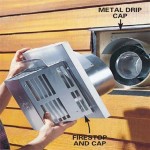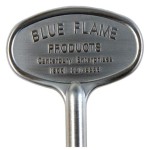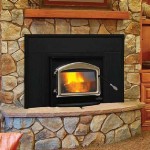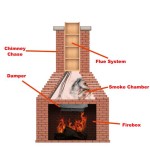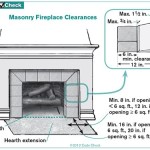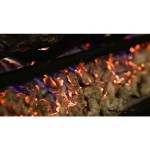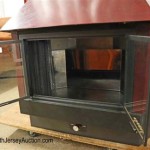Old Fireplace Mantel Surround: A Timeless Focal Point
An old fireplace mantel surround is more than just a decorative element; it is a statement piece that evokes a sense of history, warmth, and architectural significance. Its presence in a room transforms the fireplace from a functional heating source into a captivating focal point. The allure of an old mantel lies in its craftsmanship, the stories it holds within its aged wood or stone, and the undeniable character it imparts to any space. Understanding the nuances of old fireplace mantel surrounds, from their historical context to their restoration and integration into modern homes, is essential for appreciating their enduring appeal.
The term "mantel surround" refers to the decorative framing around a fireplace opening. This framing typically includes the mantel shelf, the vertical supports (often called pilasters or legs), and sometimes a decorative overmantel extending upward toward the ceiling. Old mantels, crafted during various historical periods, reflect the prevailing architectural styles and available materials of their time. This makes each piece unique and imparts a distinctive historical narrative to the room it occupies.
The appreciation of old fireplace mantel surrounds extends beyond aesthetics. They represent a connection to the past, a tangible link to the artisans and homeowners who valued craftsmanship and enduring design. Preserving and incorporating these elements into contemporary settings allows for a unique blend of old-world charm and modern sensibilities.
Historical Significance and Architectural Styles
To fully appreciate the significance of an old fireplace mantel surround, one must understand its historical context. Mantel styles have evolved significantly over the centuries, reflecting broader shifts in architectural trends and societal values. Different periods are characterized by distinct materials, decorative motifs, and construction techniques.
During the Georgian era (roughly 1714-1830), mantels were characterized by their symmetry, elegance, and classical influences. Materials such as marble, wood, and plaster were commonly used. Decorative elements included fluted pilasters, dentil moldings, and carved swags and garlands. These mantels were often painted in light, sophisticated colors, reflecting the refined tastes of the period.
The Victorian era (1837-1901) witnessed a proliferation of styles, from the ornate and elaborate to the more restrained and gothic-inspired. Darker woods like mahogany and walnut became popular, and cast iron was increasingly used, particularly for fireboxes and surrounds. Victorian mantels were often heavily ornamented with intricate carvings, inlaid tiles, and brackets. The emphasis was on displaying wealth and status through elaborate detailing.
The Arts and Crafts movement, which emerged in the late 19th and early 20th centuries, championed simplicity, functionality, and handcrafted quality. Arts and Crafts mantels typically featured clean lines, natural materials like oak and brick, and minimal ornamentation. The focus was on showcasing the beauty of the materials and the skill of the artisan.
The Art Deco period (1920s-1930s) brought a modern sensibility to fireplace design. Art Deco mantels often incorporated geometric patterns, sleek lines, and materials like marble, chrome, and exotic woods. The emphasis was on symmetry, streamlined forms, and a sense of glamour and sophistication.
Identifying the era of a specific mantel surround requires careful observation of its materials, ornamentation, and overall design. This historical awareness adds depth to its appreciation and informs decisions regarding its restoration and integration into a modern home.
Materials, Construction, and Common Issues
The materials used in the construction of an old fireplace mantel surround play a significant role in its appearance, durability, and overall value. Common materials include wood, marble, stone, cast iron, and tile. Each material has its own unique characteristics, advantages, and potential issues.
Wood is a versatile and widely used material for mantel construction. Different wood species, such as oak, pine, mahogany, and walnut, offer varying degrees of hardness, grain patterns, and color variations. Wood mantels can be carved, painted, stained, or left in their natural state. Common issues with wood mantels include warping, cracking, insect infestation, and water damage.
Marble is a luxurious and durable material often used for fireplace surrounds. Its natural veining and polished surface add a touch of elegance to any space. Marble mantels are relatively resistant to heat and fire, but they can be susceptible to staining and etching from acidic substances. Cracking and chipping can also occur, especially in areas subject to impact.
Stone, such as limestone, sandstone, and granite, offers a rugged and timeless appeal. Stone mantels are highly durable and fire-resistant, making them a practical choice for fireplaces. However, stone can be porous and susceptible to staining from soot and moisture. Cracks and fissures may also develop over time due to natural weathering and settling.
Cast iron was a popular material for fireplace surrounds during the Victorian era. Its strength and ability to be molded into intricate designs made it ideal for ornate and decorative mantels. However, cast iron can be prone to rust and corrosion, especially in humid environments. Regular cleaning and maintenance are essential to prevent deterioration.
Tile is often incorporated into fireplace surrounds as decorative accents or as a fire-resistant facing for the firebox. Ceramic tiles, porcelain tiles, and mosaic tiles are all commonly used. While tile is generally durable, grout can be susceptible to staining and cracking. Loose or missing tiles may also require replacement.
Understanding the materials used in the construction of an old fireplace mantel surround is crucial for assessing its condition and determining the appropriate restoration methods. Identifying and addressing common issues such as warping, cracking, staining, and corrosion is essential for preserving its integrity and beauty for years to come.
Restoration and Integration into Modern Homes
Restoring an old fireplace mantel surround is a delicate process that requires careful consideration of its historical significance, material composition, and structural integrity. The goal of restoration is to preserve the mantel's original character while addressing any damage or deterioration that may have occurred over time. Integrating the restored mantel into a modern home requires a thoughtful approach to ensure that it complements the existing décor and architectural style.
The first step in the restoration process is a thorough assessment of the mantel's condition. This includes identifying any areas of damage, such as cracks, chips, stains, or rot. It is also important to determine the original finish and any subsequent layers of paint or varnish that may have been applied. Historic photographs or architectural records can be valuable resources for understanding the mantel's original appearance.
Cleaning is an essential part of the restoration process. Gentle cleaning methods should be used to remove dirt, dust, and grime without damaging the underlying finish or material. Avoid harsh chemicals or abrasive cleaners, as these can strip the original patina and damage delicate surfaces. A soft brush, mild soap, and water are often sufficient for cleaning most surfaces.
Repairing any structural damage is crucial for ensuring the mantel's stability and longevity. Cracks can be filled with epoxy resin or wood filler, and loose joints can be re-glued and clamped. Severely damaged or rotted wood may need to be replaced with new wood that matches the original species and grain pattern. If dealing with marble or stone, seek the advice of a professional stone restorer who has specific knowledge of working with those materials.
Removing old paint or varnish can be a challenging task, but it is often necessary to reveal the mantel's original beauty. Chemical strippers, heat guns, and hand scraping can be used to remove layers of paint, but care must be taken to avoid damaging the underlying wood or finish. Always follow the manufacturer's instructions when using chemical strippers, and wear appropriate personal protective equipment.
Refinishing the mantel is an important step in restoring its original appearance. Depending on the desired look, the mantel can be painted, stained, varnished, or waxed. Choose a finish that is appropriate for the material and the overall style of the room. Consider using historically accurate colors and finishes to maintain the mantel's authenticity.
Integrating the restored mantel into a modern home requires careful consideration of its surroundings. The mantel should be positioned in a way that complements the room's architecture and furniture arrangement. Consider the scale of the mantel in relation to the size of the room. A large, ornate mantel may overwhelm a small space, while a small, simple mantel may get lost in a large room.
Accessorizing the mantel with decorative objects can enhance its visual appeal and create a focal point in the room. Consider displaying artwork, family photographs, candlesticks, or vases on the mantel shelf. Arrange the objects in a balanced and aesthetically pleasing manner. Avoid cluttering the mantel with too many items, as this can detract from its beauty.
The type of fireplace insert or firebox chosen can also impact the overall look and feel of the fireplace. Consider using a gas fireplace insert, an electric fireplace insert, or a traditional wood-burning firebox that complements the mantel's style and period. Ensure that the fireplace insert is properly installed and vented according to local building codes.
By carefully restoring and integrating an old fireplace mantel surround into a modern home, one can create a unique and timeless focal point that celebrates the beauty of the past while enhancing the comfort and style of the present. The process requires respect for the mantel's history, attention to detail, and a thoughtful approach to design.

Diy Custom Fireplace Surround The Honeycomb Home

Fireplace Mantels Peoria Architectural Salvage

Architectural Salvage Old Mantle

Vintage Fireplace Mantel Recycling The Past Architectural Salvage

Restoration Resources New England S Primary Source For Authentic Architectural Antiques Wood Mantels Section

Custom Rustic Cau Mantel 100 Year Old Reclaimed Wood Full Surround Fireplace With Legs And Inside Corners Real Beam

Faux Fireplace Mantel Surround

Rustic Charm Full Surround Fireplace Mantel Antique Wood Beam Bespoke Sizing Color Selection With Legs Real

Antique Pine Fireplace Mantel Surround With Dark Grain Ga9006 Governor S Architectural Antiques

Faux Fireplace Mantel Surround

